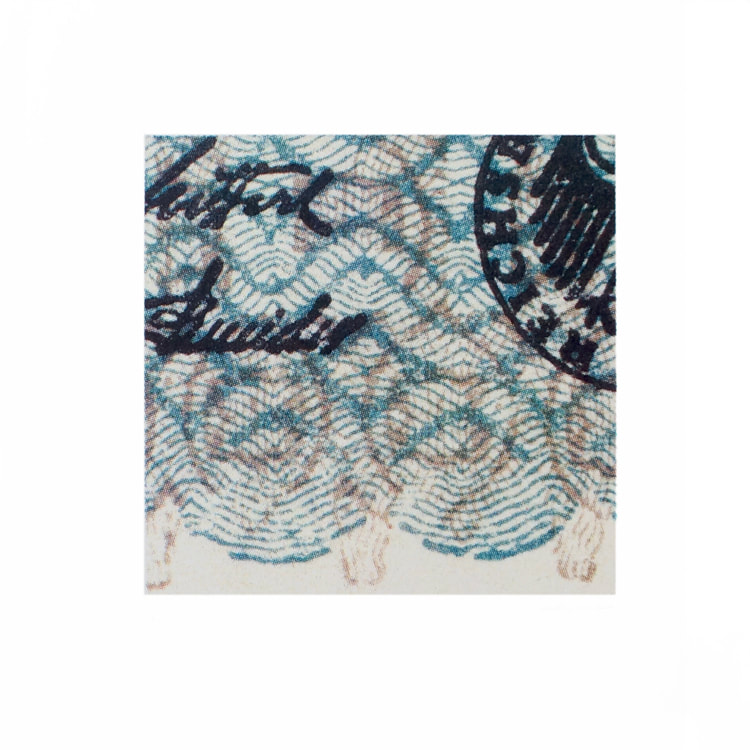Although many countries faced economic hardships following World War I, the German Papiermark was notoriously volatile and exceeded other inflation rates. I feel discussions on hyperinflation Germany focus on statistics and disregard the physicality of currency.
For me, the banknotes embody complexities of the inflation period and I strive to highlight their physicality through magnification. I am intrigued by the usage implied by the folds, stains and tears on the notes as it contradicts my research. In the later stages of inflation, foreign exchange and emergency monies were used instead of Papiermarks. The banknotes’ intricate designs are a detail I find beautiful. As a security feature, they are a testament to their intended use and raises the question: were they worth a counterfeiter’s attention?
I invite viewers to observe minute details and hope Papiermarks can become more than a statistic. To me, they are complex objects with stories to tell.
For me, the banknotes embody complexities of the inflation period and I strive to highlight their physicality through magnification. I am intrigued by the usage implied by the folds, stains and tears on the notes as it contradicts my research. In the later stages of inflation, foreign exchange and emergency monies were used instead of Papiermarks. The banknotes’ intricate designs are a detail I find beautiful. As a security feature, they are a testament to their intended use and raises the question: were they worth a counterfeiter’s attention?
I invite viewers to observe minute details and hope Papiermarks can become more than a statistic. To me, they are complex objects with stories to tell.
Titles of Papiermark pieces are derived from the banknote's printed value and date of production. Decimals are added after the year to indicate what selection number it is. For example: the piece Hundert November 1920.1 is the first selection I have created from a 100 Mark note printed in November of 1920

